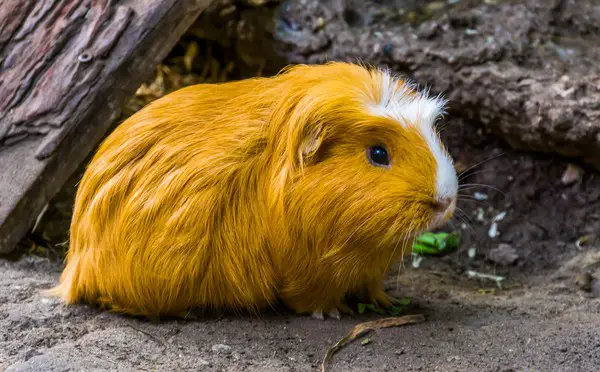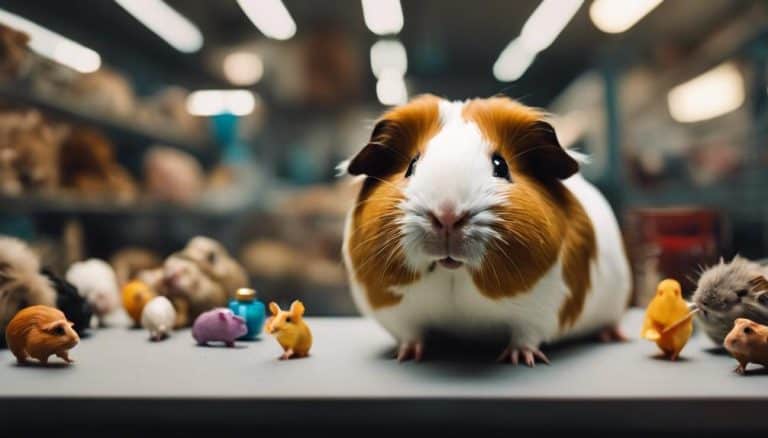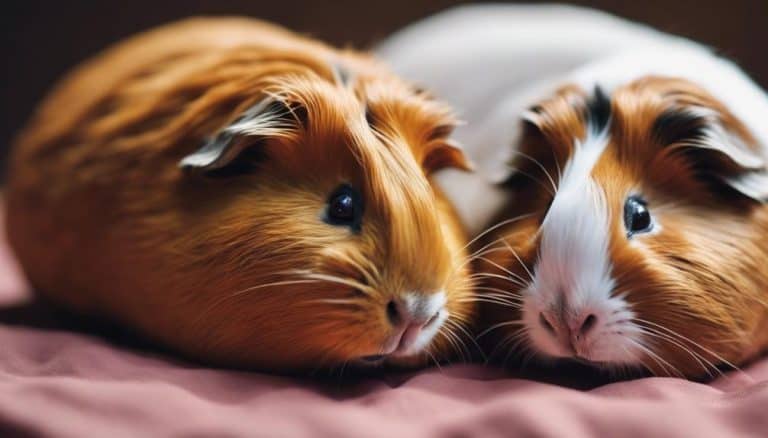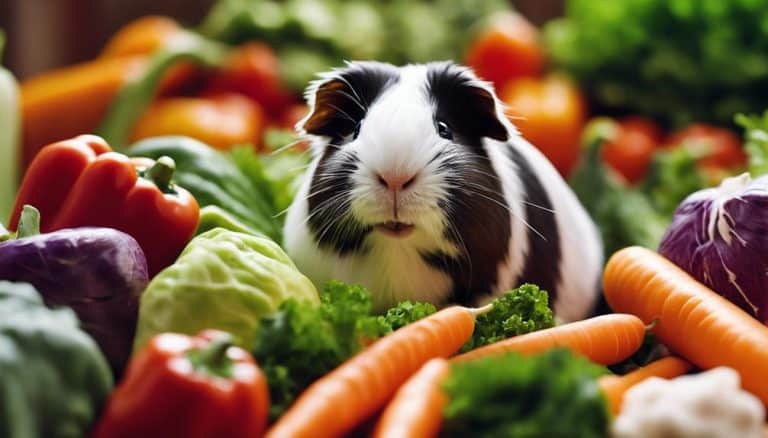What Time of Day Are Guinea Pigs Most Active?
Hey there! Ever wondered when our little guinea pig pals are most lively? Well, it turns out that they’re like little party animals in the late afternoon and evening, especially from 3pm to 5pm.
They tend to take it easy in the morning and wind down at night. Keep in mind that each piggy has their own groove, so their activity can vary. Things like munching habits, surroundings, health, and age also play a part in their energy levels.
So, let’s respect their freedom to be themselves and groove to their own beat!
Understanding Guinea Pig Activity Patterns
In our experience, guinea pigs are most active in the afternoon and evening, typically peaking between 3pm to 5pm. These furry friends have their own unique sleeping habits, and some may still be running around at midnight.
As a pet owner, it’s important to understand that guinea pigs aren’t strictly diurnal or nocturnal. They can be active during the day and night, but they tend to have a rest period from 5pm to 8pm. Factors such as feeding habits, environmental stimuli, and individual health can influence their activity levels.
It’s fascinating to observe how their activity levels can vary among different guinea pigs. Being prey animals, they’re naturally cautious and may adjust their activity patterns based on their surroundings. Understanding their activity patterns can help create a safe and comfortable environment for these adorable pets.
Factors Influencing Guinea Pig Activity
Factors influencing guinea pig activity include feeding habits, environmental stimuli, and individual health, all of which can impact their activity levels. When considering the factors influencing guinea pig activity, it’s important to recognize that they’re highly influenced by their environment and internal well-being.
- Feeding Habits: The availability of food can significantly impact a guinea pig’s activity levels. When they’ve access to food, they tend to be more active.
- Environmental Stimuli: Noise and lighting can affect a guinea pig’s activity. Loud noises or bright lights may startle them or disrupt their natural activity patterns.
- Individual Health: Health and age play a vital role in guinea pigs’ activity levels. A healthy guinea pig is likely to be more active than one that’s unwell.
- Preferences for Activity Times: Individual guinea pigs may have different preferences for when they’re most active. Some guinea pigs may be more active in the evenings, while others may be active throughout the day.
Observing Guinea Pig Activity
We closely monitor guinea pig activity to understand their behavioral patterns and preferences. Guinea pigs are social animals that enjoy running around and interacting with their environment. We’ve observed that they’re most active in the afternoon and evening, with some continuing to be active late into the night.
Throughout the day, guinea pigs take power naps, often sleeping with one eye open to remain vigilant to their surroundings. These power naps can last for several hours a day, contributing to their overall activity patterns. By observing guinea pig activity, we’ve noticed that individual pigs may have different activity preferences, resulting in unique sleep patterns.
This close observation has provided valuable insights into the behavior of guinea pigs and has helped us tailor their environment to ensure they’ve the freedom to express their natural activity levels.
Promoting Guinea Pig Activity
At our facility, we’ve found that providing ample hiding spots and interactive toys encourages guinea pig activity throughout the day. To promote guinea pig activity, we’ve implemented the following strategies:
- Ample Hiding Spots: We ensure that the guinea pig cages are equipped with cozy hiding spots such as tunnels, igloos, or boxes, allowing them to feel secure and safe within their environment.
- Interactive Toys: Incorporating toys like chew toys, tunnels, and balls encourages physical activity and mental stimulation, keeping the guinea pigs engaged and active.
- Proper Feeding: Ensuring that guinea pigs have access to fresh vegetables, hay, and pellets throughout the day promotes healthy eating habits and sustained energy levels for activity.
- Temperature and Lighting: Keeping the guinea pig area at comfortable temperatures and providing natural light during the day helps regulate their circadian rhythms, promoting activity during daylight hours.
Interacting With Active Guinea Pigs
Promoting guinea pig activity through interaction involves understanding their natural behavior and adapting our approach to their activity levels.
When interacting with active guinea pigs, it’s essential to be mindful of their energy levels and preferences. Engage with them around their peak activity times in the afternoon and evening, offering stimulating activities such as playtime and providing treats.
Keep your guinea pig’s napping schedule in mind to avoid disrupting their sleep at night. Aim to interact for short periods, as active guinea pigs may not stay engaged for much time at once. Spending a few minutes at a time, several times every day, can be more effective than trying to interact for longer than usual.
Conclusion
In conclusion, guinea pigs are most active in the afternoon and evening, with peak activity occurring from 3pm to 5pm. However, individual guinea pigs may have their own unique activity patterns.
Factors such as feeding habits, environment, health, and age can also influence their activity levels.
It’s important to observe and understand their activity patterns in order to promote and interact with them effectively.






